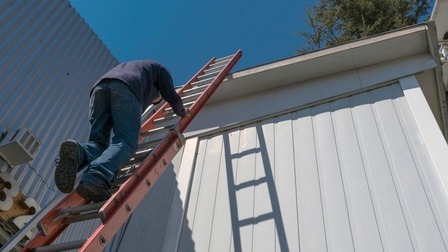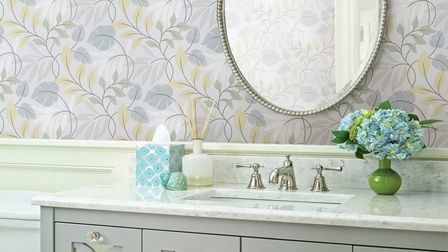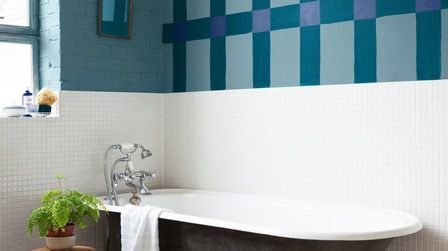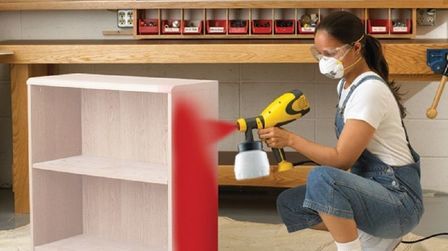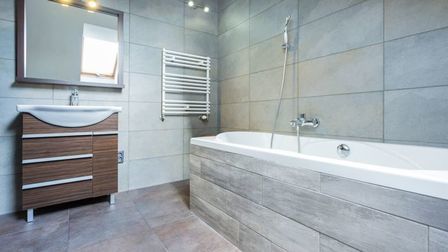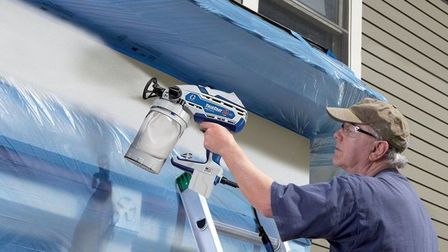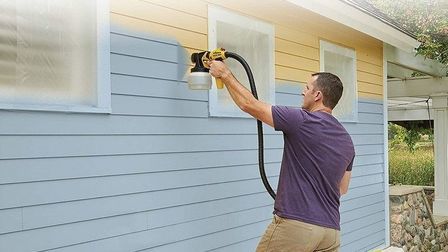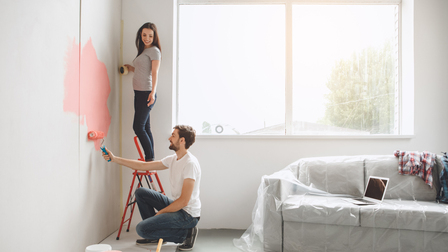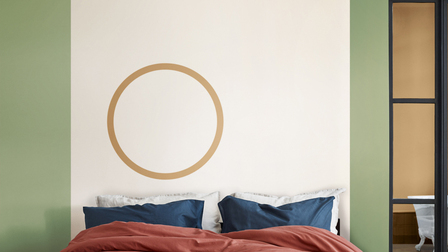Winter is here. And you are looking for inventive ways to keep your cold floors warm. And ultimately your feet warmer.
The feeling of walking on a moderately warm – not too cold but not too hot – just the right warmth beneath your feet – on a chilly winter night is one of the good things in life. Perfect time to go through some of the best ways to keep your floors warm this winter.
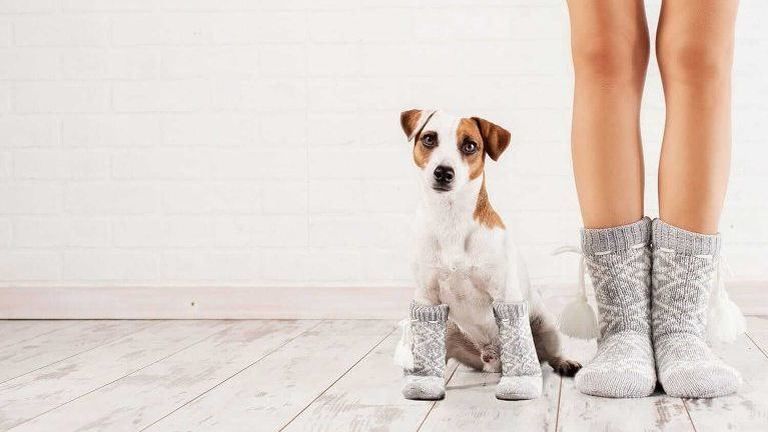
As experts in household heating and cooling techniques, we have compiled this comprehensive list of some incredible ways to keep your cold floors warm and cozy. These have been tested and proven to be effective in normal as well as colder climates.
Other than the general outlook, we have created separate sections in this guide for different types of floors. So, even if your house has wooden plank flooring (which is our favorite, by the way) we have got you covered. Read on…
But before we dive into listing and describing them, here’s an introduction into why you need to warm up floors in winter…
Why Should We Keep Floor Warm in Winter?
Floors and Entire Rooms Get Cold and Uncomfortable
Moisture is the culprit.
Apart from the drop in the temperature due to atmospheric and weather conditions (winter climate, mostly), your house walls and floors can get damp due to a lot of factors. A large amount of moisture is generated in the air by a house’s inhabitants themselves. Activities like showering, cooking, and exercising can all give rise to elevated levels of moisture in the room.
This moisture gets condensed on cold surfaces – most notably walls, tiled floors, and ducts.
Together with the low temperature of the atmosphere, the moisture in the air leads to colder rooms and floors. This, in turn, gives rise to mold growth which can have adverse effects on your health.
Additionally, one of the biggest reasons why this moisture stays inside your house is a lack of heat. Two reasons why that happens:
- Poor insulation inside and outside the house
- Inefficient or malfunctioning heating systems
Although households in the US and elsewhere pay attention to their central heating system, in most cases they do not function properly or are just poorly maintained. The inhabitants may not even know about it until someone gets sick or catches a cold that does not go away...
Mold Growth in Cold Climate
Have you ever seen a type of algae growth behind your washing machine that is soft in texture and greenish white? It’s called mildew and is a direct result of increased levels of moisture in and around that area. Since washing machines deal with a lot of water, the areas around it are more prone to dampness.
In the winter season, mildew growth can be observed anywhere from floors to ceilings, tiled and cemented walls, and even in air ducts where there is also a lack of natural ventilation.
Cold rooms and floors can have a negative impact on your health and lifestyle, which is why there is a dire need to keep everything warm and snug in winter.
Here’s a detailed look at why…
Why Do You Need to Warm Up Cold Floors?
It’s 10 in the evening. The bedroom is chilly and you know it. You wake up from an early nap, sit upright on the bed, and forget to wear your slippers. Your feet touch the ice-cold floor and you suddenly go numb till your knees.

Have you ever experienced a body-numbing experience like this? We know you have because we certainly have. And it gets even worse in winter.
Cold floors in winter is a common menace that household members face around the world. Whether you are in Alaska or Kuala Lumpur, the curse of ‘glacial floors’ is omnipresent. Apart from a sureshot way to give you cramps in the legs, cold floors and rooms can alsogive rise to:
- Ailments in and around your feet
- Respiratory illnesses due to mold growth in walls and floors
- Psychological effects in senior people, kids, sick people
- Allergies and skin infections
All of these can be prevented if you heat your house properly and take necessary precautions even before winter arrives. You should just know how to handle it – which is why we created this simple guide for you.
There are a few more areas of concern that need to be addressed while you check out ways to keep your floors warm. Here are the most important ones…
You Own an Old House
If your house is old and lacks internal insulation, you can check out the methods listed below and implement two or more of them for long-term, sustained warmness inside your house.
Older houses need more attention as they lack modern amenities and insulation that reduce the impact of the external atmosphere inside.
Elderly in the House?
If you have senior or sick members in your house, having warm floors is absolutely important. They are more prone to health issues. In such cases, the entire house needs to be insulated and heated.
Thermal socks and warm slippers may help in the interim, but a permanent solution is always preferred.
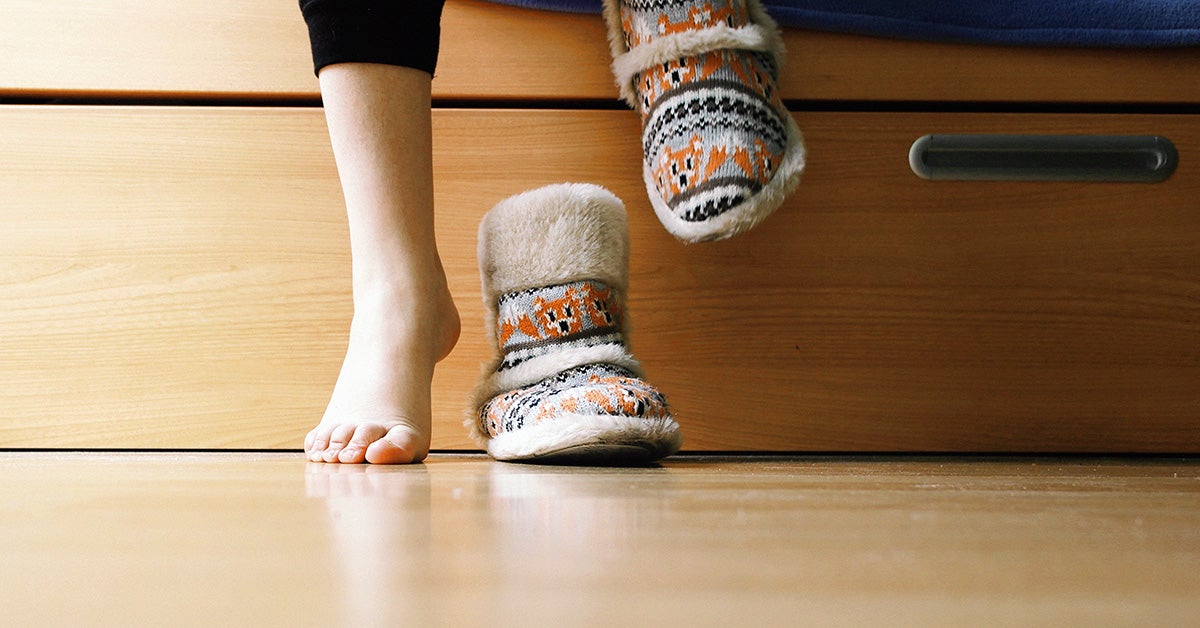
Construction and Built of the House
If your house is in the ground level (as opposed to in a building) or if the room in focus is a basement (below ground), the coldness can increase dramatically. Such types of rooms need to be insulated properly and completely to avoid coldness from seeping in.
Modern insulation and heating techniques can aid in controlling the room temperature, thereby warming up the floors.
Whatever may be the reason, the need to warm up cold floors is a necessity today. Even as we anticipate the worst reactions from global warming, it becomes all the more important to take care of ourselves. Do you think we spend the safest and most peaceful time inside our own house?
Common Misconceptions about Cold Floors
While we have touched upon the basic points related to cold floors, you should also know about the common myths that surround it. Local firms supplying heating systems can trick you into believing things that would eventually make you buy their services.
Taking the wrong decision when it comes to cold floors can not only set you back but also be a threat to you and your family members’ health.

To avoid misinformation, here are some common misconceptions about cold floors:
Sealing Gaps on the Floor Solves the Problem
It does not. Mere sealing of cracks and gaps on your floor (regardless of the floor type) will not solve the issue of coldness. Of course, such cracks can aggravate the problem, but insulation and proper heating mechanism are the right solutions for it.
Underfloor Heating is Useless
A lot of people believe that underfloor heating is useless as the law of thermodynamics states that hot air rises and does not stay under the floor. While the law is true, it does not take into consideration that insulation that is part of any heating system.
Underfloor heaters have insulators in place that prevent the hot air from escaping. This is what keeps the floors adequately warm and comfortable.

Heating Increases Power Bills
This is not exactly true because, again, insulation takes care of the problem. In an underfloor or room heating system, the heat stays for as long as the insulation stays intact. This way there is no need to switch ON the HVAC system throughout the day and night.
An hour of heating can easily make the entire house warm and cozy enough depending upon the size of the house/rooms and the number of members.
Incredible Ways to Warm Up Floors
Now that those ugly misconceptions are out of the room (pun intended), let’s talk about actual ways to get rid of coldness in winter. These are the top proven ways to warm up floors and walls.
1 - Install Thermal Break on the Floor
Thermal tiles are great to keep the floors at least 8 degrees warmer in winters. They can be installed right above the concrete foundation to decrease the upward seeping of coldness, mostly at night.
These are subfloor tiles that can be installed along with normal tiles (ceramic, for instance) to keep your floors perennially warm across seasons.
It is a one-time investment and a great alternative to underfloor heating.

2 - Set Ceiling Fans to Rotate Clockwise
According to Lifehacker, setting your ceiling fans to rotate clockwise at a lower speed helps in driving warm air towards you rather than pushing it upwards.
This is a great, cost-effective tip that can be done easily.
3 - Keep Room Doors Shut
Especially the kitchen doors where most of the moisture is generated. When you keep the door closed, moisture does not sway around in other rooms, helping in making the rooms less cold at night.
4 - Get Some Extra Carpets and Rugs
If you already have wall-to-wall carpet on the floors, then a better solution would be to get underfloor heating. Otherwise, a few extra rugs beneath your feet might be just the solution you are looking for.
Fabric can help lessen the effect of moisture in the air.

5 - Turn Off Exhaust Fans
Both in the bathrooms and the kitchen.
Exhaust fans push precious hot air out of your house, which means more space for moisture to condense and increase the coldness level in the house.
6 - Install a Fireplace
This is one of those old tricks in the book that can warm up entire living room floors. We understand that firewood is not cheap these days, but they can give you much comfort in cold winters when nothing else works.
It is a quick process as you can get some much-needed heat with a touch of a button these days.

7 - Install Makeshift Electric Floor Heaters
If you happen to stay in a small area throughout the night, then electric floor heaters are a great solution. These can easily slip beneath a rug or a carpet and give your feet the pleasure of a warm floor.
Makeshift heaters are cheap and can be carried around with you on trips as well.
If this is the first time you are experiencing the issue of cold floors, you should check out these common ways to keep them warm. The following are the bare minimum when it comes to household protection from winter cold.
8 - Insulate Your Entire House
By this, we mean insulating each and every nook and corner of all the rooms. Fill all visible and invisible gaps with the help of an HVAC professional.
Areas that you need to focus on are wall joints, gaps between tiles, marble, and wood squares, ceiling joints, door and window foundations, between baseboards, and areas around the kitchenette.
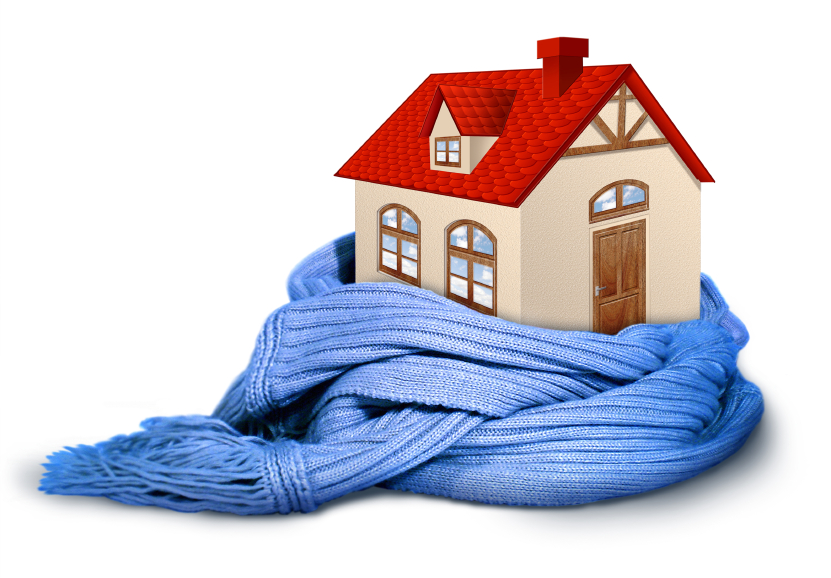
Most people only focus on the floors and walls, but we suggest you pay equal attention to the ceiling as well. You don’t want the precious heat generated by your HVAC system to escape out of the rooms now, do you?
If you want to focus on a single room, you can also make use of a draft snake – a stopper made of any material that acts as a deterrent under door gaps – to insulate the door’s lower part.
When you cover the entire house with insulation, the heat that is naturally (or artificially) produced stays inside the rooms, ultimately keeping the floors and walls warm enough.
9 - Insulate Underneath the Floor
This is a subset of the previous point. Just insulating the floors and walls internally will not be enough if you live in places where the climate gets colder. Especially for rooms that are built above an unheated crawl space, insulation is absolutely necessary.
This prevents the coldness from seeping from beneath the floor. It can also keep rodents and vermin at bay, which might otherwise crawl up in search of warmth.
If you feel the unusual coldness on the floors, there is a high chance that the issue is with the crawl space.
Fiberglass and foam are the two best types of insulation for this purpose.
10 - Run Maintenance of the Heating System Every 3 Months
Keeping the air ducts clean and uninterrupted is important for overall ventilation inside the house. While regular housekeeping is enough to some extent you should ensure that you hire professionals to run proper maintenance once every three months.
This is directly related to the insulation point we made above. One cannot work without the help of the other. Therefore, if you lack either of the two, make sure to get it done before the winter arrives.

Pro Tip – Get the insulation done and heating system installed during the fall season itself to avoid exorbitant charges.
11 - Get Additional Floor Heaters
If you tend to stand and sit in a small area (especially if you work from home) or if you have a sick person who does not move much, you can opt for an additional, directional heater.
It is arguably the best option to keep your floors warm in winter without spending too much on power. Following are the most common types of floor heaters:
- Space heater – economical; provides enough respite in a small area
- Toe-tick heaters – also known as under-cabinet heaters, they warm up floors across a wide area. They are more expensive
- Cove heaters – prevent cold air from seeping inside through windows and doors
- Underfloor radiant heaters – professional and top-of-the-class systems that keep entire floors across rooms heated all the time.
While we suggest you to choose them depending upon your specific needs, it should be noted that underfloor heating should be implemented along with a central room heating system for optimum effect.
Alternatively, if cold floors are your only problem, getting such underfloor eating will be a quick solution.
12 - Insulate Basement Walls
If you have a basement instead of crawl space, you can insulate the entire walls of the basement to lessen the cold effect upstairs.
An insulation of the grade R-10 is the minimum you should opt for maximum effect within the basement as well as in the rooms above.
13 - Install New Windows in the Basement
If your old windows – the ones that you installed while constructing your house – have corroded, it is time to install new ones with a better insulation rating.
Basement windows allow you to hold back cold winds from entering your house.
Floor-warming Tips for Specific Types of Flooring
Now that we have gone through the general ways of floor heating, here are some direct tips for specific types of flooring. We have taken the most common types of flooring into consideration.
For Wooden/Vinyl Plank Floors
These methods are also great for laminate, waterproof laminate, and wall-to-wall carpeted floors.
- Use rugs and carpets
- Draught proofing
- Refinish the entire flooring with varnish and paint (using polyurethane)
For wooden or similar floors, make sure you also install a hygrometer to keep the humidity of the floors under check. You do not want to overheat the wooden planks so much that they start to warp.
For Ceramic/Tiled/Sheet Floors
These methods are also great for porcelain floors.
- Wear warm slippers
- Under-floor tubing in specific rooms
- Install a gas-fired boiler in the basement (if applicable)
- Install a sub-floor (thermal break)
For Stone Floors
- Install a fireplace as stone tiles tend to heat up rather quickly
- Low-level duct heating
For Concrete/Cork/Rubber Floors
- Install a thermal break or above-slab heating system (cheaper)
- Foam insulation in the basement and on the walls
- Install foam-insulating panes on the floor and then cover them up with finish flooring
While all of these tips and tricks are effective, it is up to you and your specific needs that will dictate the type of cold proofing that you do in your house. We hope that this guide has helped you make a wiser decision.
If you have any more inventive, DIY ideas that have worked for you, do let us know in the comments. We are always interested in knowing lesser-known ways to keep ourselves warm as temperatures in winter season around the globe are dropping year after year.

